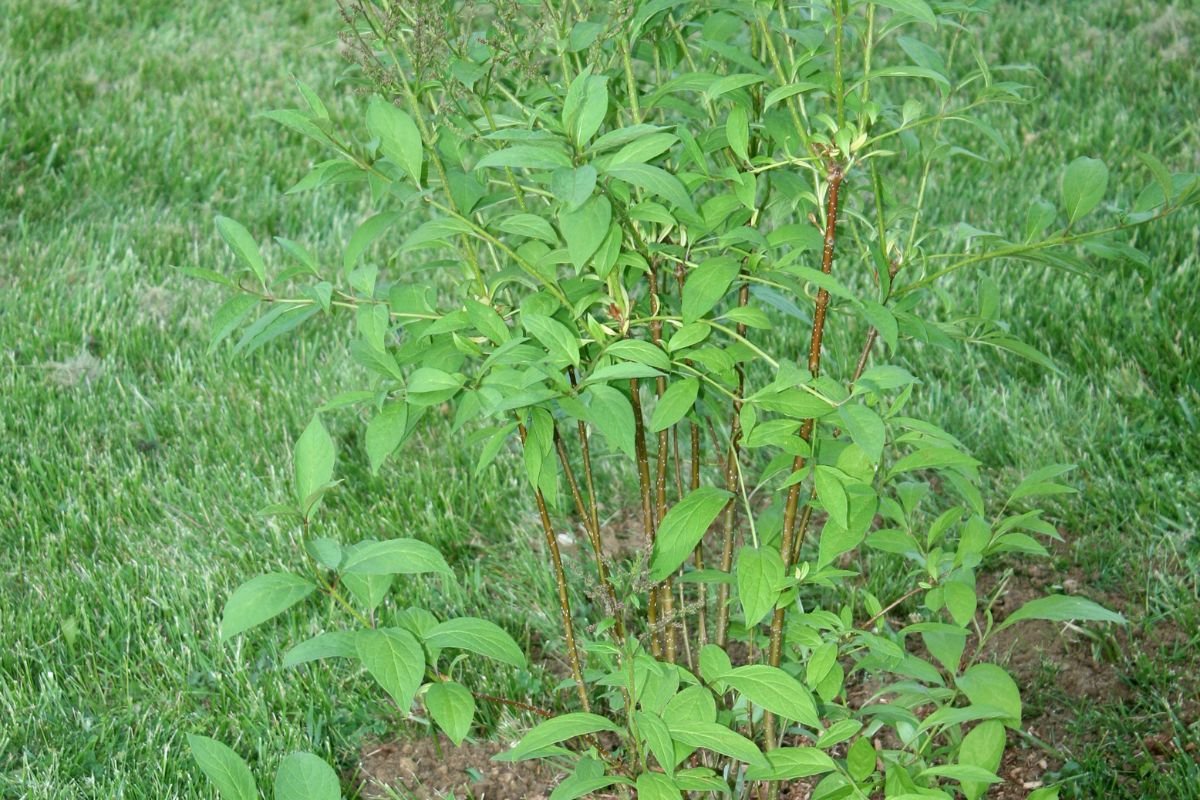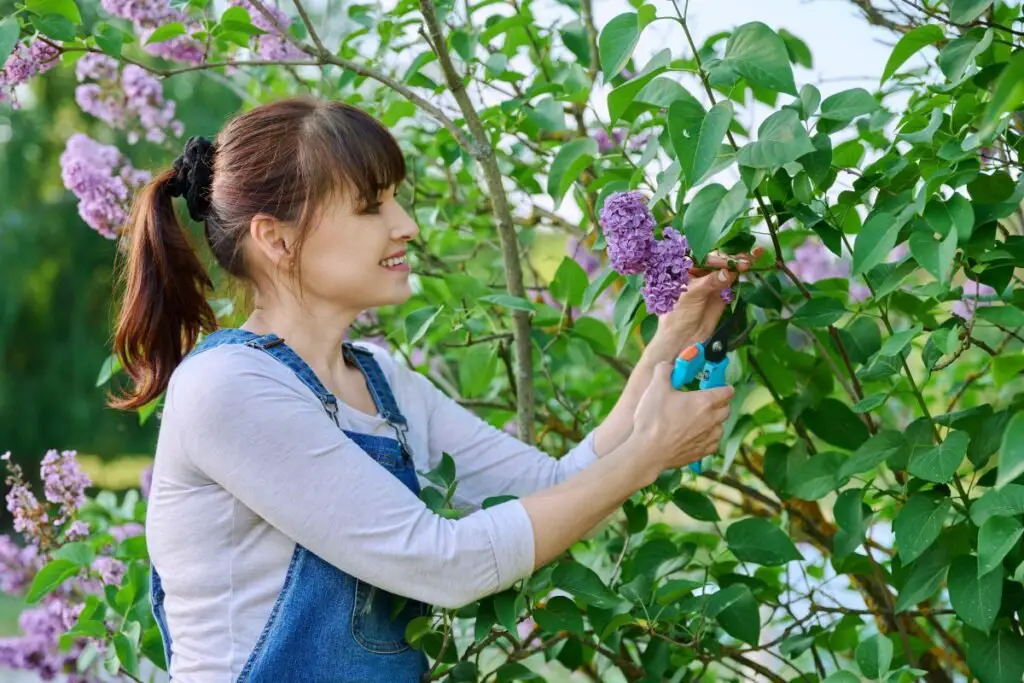
If you're dealing with a lilac shrub without sweet smelling flowers and foliage, worry not - we've got you covered. Lack of blooms on your lilac bush can be frustrating, but there are solutions to help you revive its flowering potential.
Key Takeaways
- Check Sunlight Exposure: Ensure your lilac bush receives adequate sunlight, ideally at least 6 hours a day, to promote healthy blooming.
- Soil Testing and Nutrition: Conduct soil tests to determine nutrient deficiencies and adjust fertilization accordingly to support flower production.
- Pruning Practices: Properly prune your lilac bush after flowering to encourage new growth and future blooms.
- Encourage Blooming: Use organic matter like compost or mulch around the base of the plant and provide consistent watering to stimulate flowering.
- Monitor for Pests and Diseases: Regularly inspect your lilac bush for pests and diseases that may hinder blooming, and take appropriate action to address any issues.
- Seek Expert Advice: Consult experienced gardeners or additional resources for specific guidance on caring for lilac bushes and troubleshooting non-flowering concerns.
Understanding Lilacs
Growth Cycle
Lilac bushes go through distinct growth stages, starting from dormancy in winter to blooming in spring. Each phase is crucial for the plant's overall health and flowering potential. By monitoring the growth cycle, you can anticipate any issues that might hinder blooming.
- Dormancy: During winter, lilacs rest and prepare for the upcoming growing season.
- Bud Development: In early spring, buds form on the branches, getting ready to bloom.
- Blooming: As temperatures rise, the buds burst into beautiful flowers, showcasing their vibrant colors.
Sunlight Needs
For optimal growth and blooming, lilac bushes require a minimum of six hours of sunlight daily. Choosing a sunny spot with adequate exposure is essential for healthy development. Be attentive to seasonal changes and adjust sunlight exposure accordingly to ensure the plant thrives.
- Sunlight Exposure: Direct sunlight helps lilacs photosynthesize efficiently, promoting robust growth.
- Seasonal Adjustments: During hot summers, provide some shade to prevent sunburn on leaves while maintaining sufficient light levels.
Soil Preferences
To prevent waterlogging, ensure the soil around your lilac bush is well-draining. Opt for fertile soil rich in organic matter to support healthy growth. Adjusting soil pH levels to match the plant's preferences enhances its ability to absorb nutrients effectively.
- Drainage: Poorly draining soil can lead to root rot and other issues; amend with sand or perlite if needed.
- Fertility: Organic matter enriches the soil, providing essential nutrients for vigorous growth and abundant flowering.
Pruning Basics
Understanding proper pruning techniques is key to maintaining a flourishing lilac bush. Pruning impacts blooming by stimulating new growth and improving overall plant health. Follow a recommended schedule to ensure you don't inadvertently prune away next year's blooms.
- Timing: Prune immediately after flowering to encourage new growth without sacrificing next year's blossoms.
- Technique: Remove dead or diseased branches while shaping the bush for optimal aesthetics and health benefits.
Common Blooming Issues
Inadequate Sunlight
Insufficient sunlight can hinder a lilac bush's ability to bloom, causing sparse or no flowers. Watch for signs like fewer buds and pale leaves. To remedy this, relocate the plant to a sunnier spot with at least six hours of direct sunlight daily. Observe the plant's progress after moving it to ensure improved blooming.
Improper Pruning
Improper pruning can lead to diminished flowering in lilac bushes by removing potential flower buds. Avoid cutting back too much or at the wrong time, which can disrupt blooming cycles. Follow guidelines to prune after flowering, trimming only dead or overgrown branches to encourage new growth and abundant blooms.
Poor Soil Conditions
l quality greatly impacts a lilac bush's blooming capacity. Address issues like nutrient deficiencies by fertilizing appropriately based on soil tests. Incorporate organic matter like compost to enhance soil structure and nutrient content for better flower production. Monitor the plant's response to these soil amendments for improved blooming results.
Importance of Sunlight
Full Sun Exposure
Placing the lilac bush in a spot with full sun exposure is crucial for optimal blooming. Check how the plant responds to increased sunlight, as this directly impacts flowering. Make adjustments to ensure the bush receives maximum benefits from full sun exposure.
Shaded Impact
Understanding how shaded areas affect lilac bush flowering is essential. Find solutions to minimize shading effects on blooming, such as pruning nearby trees or plants. Keep a close eye on the plant's development after addressing shading issues.
Soil and Nutrition
Acidic Soil Effects
Acidic soil negatively impacts lilac bush growth and flowering by inhibiting nutrient uptake. Adjusting soil pH levels is crucial for creating optimal conditions for blooming. By monitoring the plant's response to soil pH modifications, you can ensure healthier growth and abundant flowering.
Fertilization Tips
Selecting the right fertilizers is essential to provide necessary nutrients for healthy growth and blooming of the lilac bush. Following recommended fertilization schedules prevents overfeeding, which can hinder flowering. Observing how the plant reacts to fertilization helps in achieving improved blooming results.
Pruning Techniques

Best Time to Prune
Pruning lilac bushes at the optimal time is crucial for encouraging blooming. Timing plays a significant role in flower bud development, affecting the plant's ability to produce vibrant blooms. To enhance flowering, it is essential to adhere to seasonal pruning guidelines.
Understanding the seasonal cues for pruning can lead to a bountiful display of flowers. By pruning right after the blooming season, typically in late spring or early summer, you allow the plant to develop new flower buds for the following year. Avoiding late fall or winter pruning is vital as it can remove potential flower buds.
Pruning for Blooms
Employing specific pruning techniques tailored to lilac bushes can help maximize their blooming potential. By strategically trimming branches and removing dead wood, you can promote healthy growth and abundant flowering. Properly executed pruning practices play a pivotal role in shaping the plant's structure and enhancing its overall health.
Implementing targeted pruning strategies involves selectively removing older branches to stimulate new growth and flower production. By focusing on cutting back overgrown or crossed branches, you create space for sunlight penetration and air circulation, fostering optimal conditions for blooming. Consistent and precise pruning efforts are key to ensuring a profusion of blooms each season.
Encouraging Blooms
Optimal Planting Conditions
Creating the perfect planting environment is crucial for blooms on a lilac bush. Ensure the soil quality is rich and well-draining. Place the bush in an area with ample sunlight exposure to promote healthy growth. Proper spacing between plants prevents overcrowding, allowing each bush to flourish independently. By monitoring these factors, you can optimize the lilac's growth and increase the chances of vibrant flowers.
Watering Practices
Maintain a consistent watering schedule to keep the soil moisture levels stable around the lilac bush. Adjust the frequency of watering based on seasonal variations and weather conditions. Regularly check the hydration status of the plant by feeling the soil to ensure it remains moist but not waterlogged. Adequate hydration is essential for supporting robust blooms and overall plant health.
Mulching Benefits
Mulching offers various advantages for lilac bushes, primarily aiding in moisture retention in the soil. Select suitable mulch types such as organic materials like wood chips or bark, and apply them generously around the base of the plant. By mulching correctly, you can regulate soil moisture levels effectively, providing a conducive environment for flower production. Monitor how mulching impacts both soil moisture and plant vitality to enhance blooming outcomes.
Addressing Non-Flowering Concerns
Troubleshooting Tips
Lilac bushes may fail to bloom due to various common issues such as inadequate sunlight or improper pruning. Identify these problems and take appropriate actions to promote blooming. Monitor the plant's progress closely to ensure successful flowering.
Pest infestations, diseases, or unfavorable environmental factors can all impact a lilac bush's ability to produce flowers. Address these issues promptly by using organic pest control methods or disease-resistant plants. Regularly inspect the plant for signs of distress and adjust care accordingly.
To encourage blooming, it is crucial to monitor the lilac bush's response to your troubleshooting efforts. Make necessary adjustments in watering, fertilizing, or pruning based on the plant's feedback. By staying proactive and observant, you can enhance the chances of a vibrant blooming season.
Reviving Lilacs
When faced with a struggling lilac bush that refuses to bloom, consider implementing specific strategies for revival. Begin by assessing the plant's current condition, looking for signs of stress or nutrient deficiencies. Tailor your approach based on these observations for targeted revival techniques.
To revive a lilac bush effectively, introduce measures like adjusting soil pH levels, providing adequate nutrients through fertilization, or addressing any root system issues. By addressing these underlying problems, you can create an environment conducive to blooming success. Track the plant's progress closely to gauge the effectiveness of your revival efforts.
Monitoring the lilac bush's response to revival strategies is crucial for evaluating their impact on blooming potential. Keep a close eye on new growth, bud formation, and overall plant health as indicators of successful revival efforts. With patience and consistent care, you can revive a struggling lilac bush and witness its vibrant blooms once again.
From Gardeners' Experience

Tips from Oregon
Elizabeth, an experienced gardener from Oregon, shares insights on dealing with lilac bushes that refuse to bloom. She recommends pruning the bush in early spring to stimulate flower growth. Elizabeth suggests using a balanced fertilizer to encourage blooming and enhance the plant's health.
- Prune lilac bush in early spring
- Apply balanced fertilizer for optimal growth
Implementing Elizabeth's advice can help tackle blooming challenges effectively. Her Oregon-specific tips are valuable for optimizing lilac bush flowering in similar climates. By following her recommendations, gardeners can promote healthy growth and vibrant blooms in their non-flowering lilac bushes.
Insights from Missouri
Mary's experience with a non-flowering lilac bush in Missouri led to successful intervention. She discovered that adjusting the soil pH to slightly acidic levels significantly improved blooming. Mary also found that providing adequate sunlight exposure was crucial for encouraging flower development.
- Adjust soil pH to slightly acidic levels
- Ensure adequate sunlight exposure for the plant
Gardeners facing similar issues can learn from Mary's success story and apply Missouri-specific insights to troubleshoot non-flowering lilac bushes effectively. By replicating her strategies, they can witness improved blooming results and transform their lackluster plants into vibrant garden features.
Additional Resources
Related Articles
Explore additional resources and articles on lilac bush care and blooming. Access expert advice and tips to enhance flowering outcomes. Stay informed about the latest trends in lilac bush cultivation for better blooming.
Get the Dirt
Discover valuable information and expert recommendations for successful lilac bush blooming. Access practical tips to address common blooming challenges effectively. Stay updated on best practices and techniques to ensure thriving lilac bushes.
Summary
Understanding the factors affecting your lilac bushes' blooming is key to ensuring a vibrant garden. Factors like sunlight, soil quality, and proper pruning techniques play pivotal roles in encouraging blooms. By addressing these aspects diligently, you can nurture your lilac bushes to reach their full blooming potential. Remember to leverage the experiences of seasoned gardeners and explore additional resources for further guidance. Take charge of your garden's beauty by applying these insights and watch your lilac bushes flourish with an abundance of colorful blooms.
Remember, your attention to detail and proactive care will yield rewarding results in your gardening endeavors. Share your newfound knowledge with fellow garden enthusiasts and continue to learn and adapt your techniques for a thriving garden space. Your commitment to nurturing your lilac bushes will not only enhance your outdoor sanctuary but also bring joy and beauty to your surroundings.
Frequently Asked Questions
How can I encourage my lilac bush to bloom?
To encourage blooming in your lilac bush, ensure it receives adequate sunlight, prune properly after flowering, provide well-draining soil rich in nutrients, and avoid over-fertilizing. Consider planting companion plants that attract pollinators to enhance blooming.
Why is my lilac bush not flowering?
Lilac bushes may not flower due to insufficient sunlight, improper pruning, young age, or excessive nitrogen fertilization. Ensure your lilac bush receives at least 6 hours of direct sunlight daily, prune correctly immediately after blooming season ends, and avoid using high-nitrogen fertilizers.
What are common non-flowering concerns with lilac bushes?
Common non-flowering concerns with lilac bushes include inadequate sunlight exposure, improper pruning techniques, nutrient deficiencies in the soil, and planting in unsuitable locations. Address these issues by adjusting sunlight exposure, practicing correct pruning methods, amending soil with appropriate nutrients, and relocating if necessary.
Are there specific soil requirements for a healthy lilac bush?
Lilac bushes thrive in well-draining soil that is slightly alkaline with good fertility. Amend the soil with organic matter like compost or well-rotted manure to improve drainage and nutrient content. Ensure the pH level ranges between 6.5 to 7.0 for optimal growth and flowering.
How do experienced gardeners address lilac bush blooming issues?
Experienced gardeners tackle lilac bush blooming issues by closely monitoring sunlight exposure, implementing proper pruning practices based on plant age and variety, conducting soil tests to determine nutrient deficiencies, and incorporating organic fertilizers or amendments as needed. They also maintain a regular watering schedule during dry periods for healthy blooms.
Image Source: Paid image from CANVA





